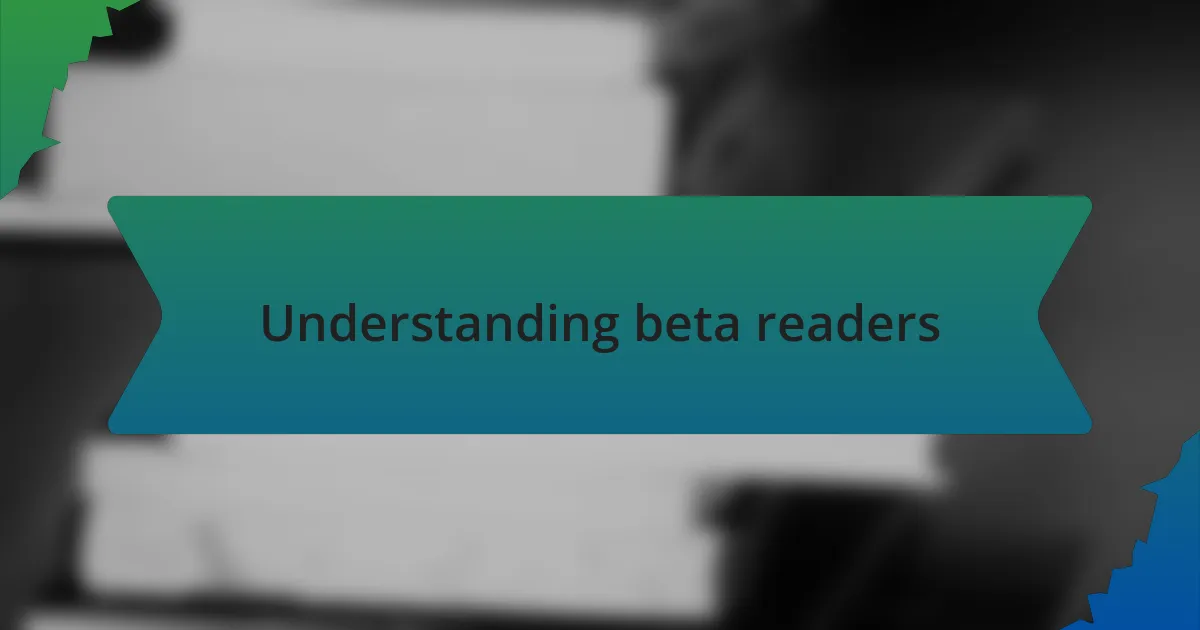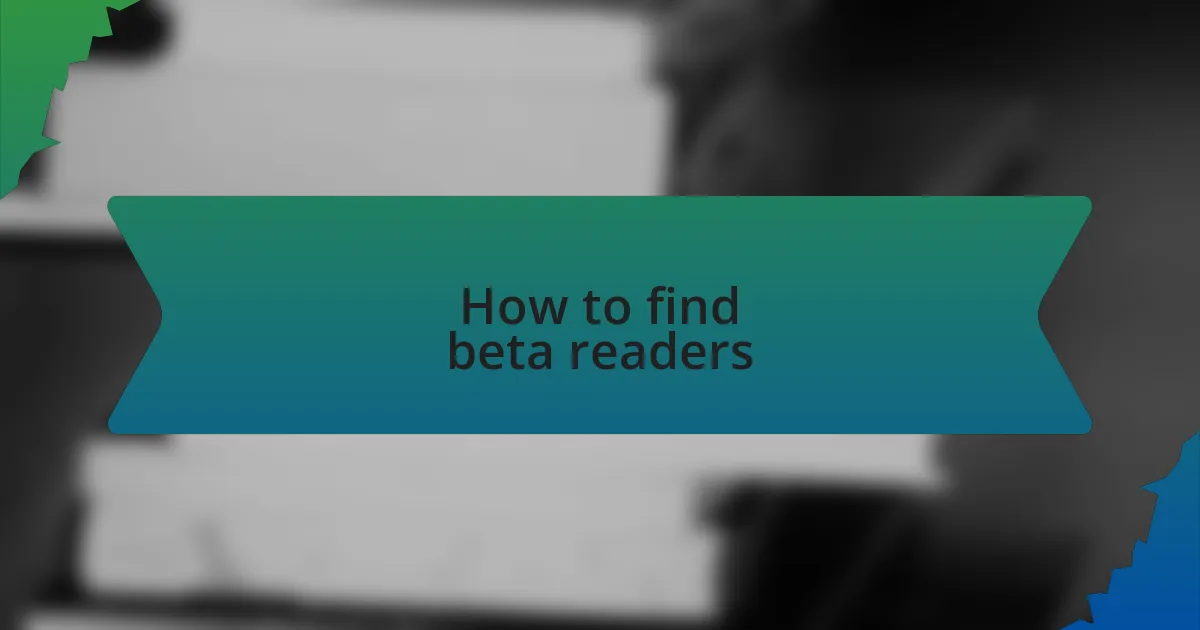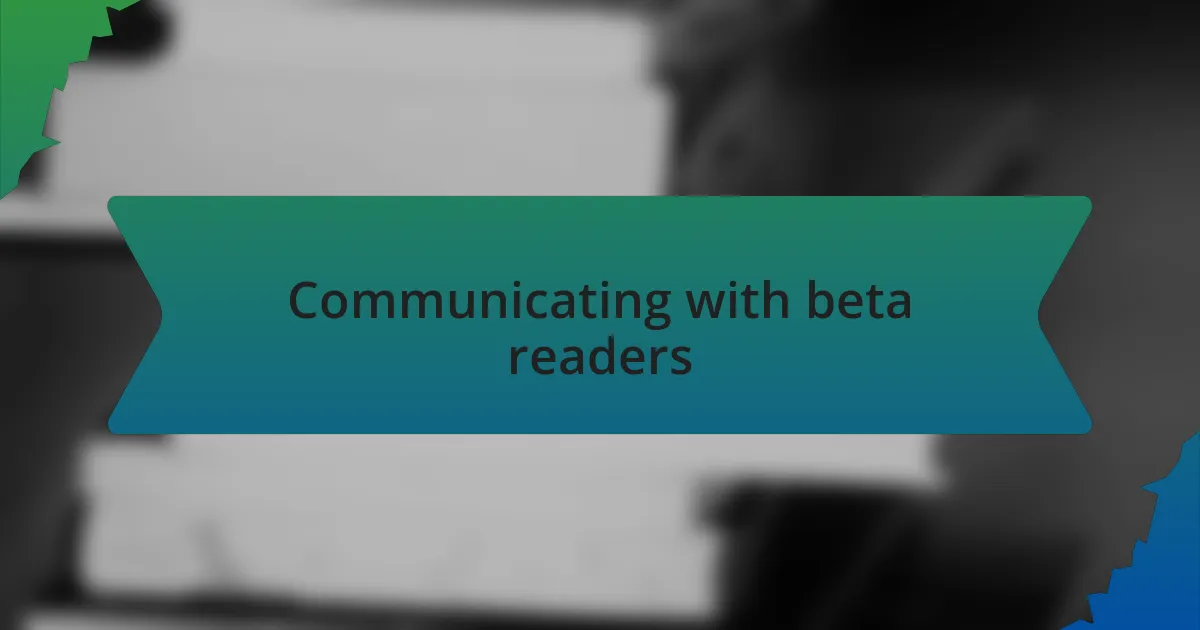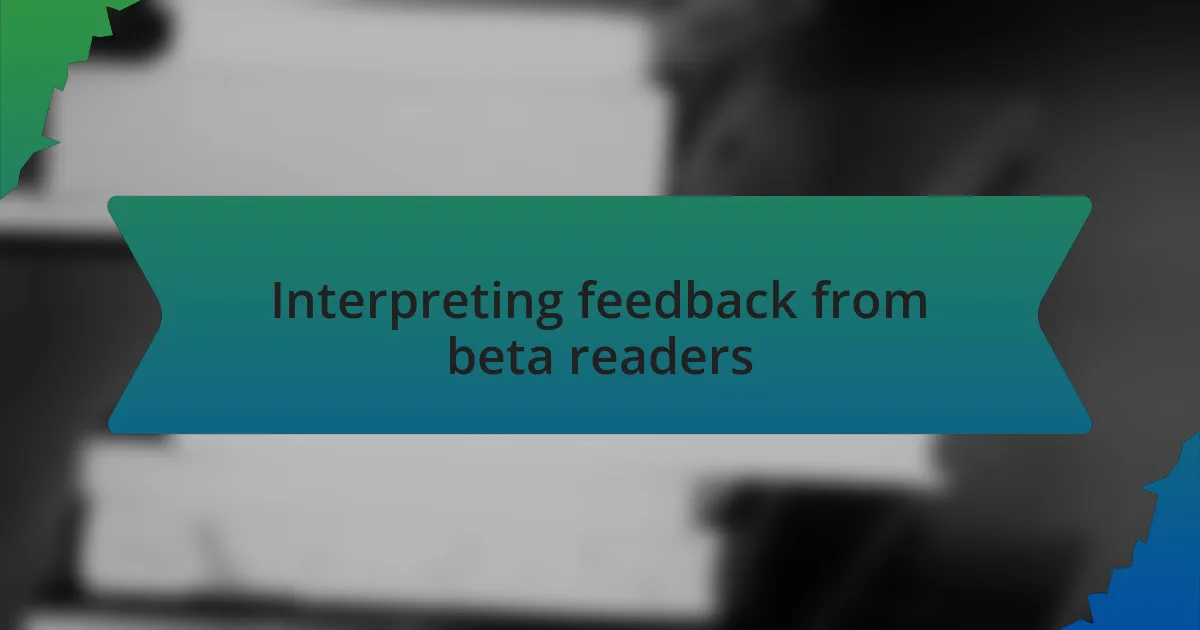Key takeaways:
- Beta readers offer invaluable feedback that can enhance a writer’s manuscript by providing fresh perspectives and highlighting areas for improvement.
- Building relationships with beta readers fosters a collaborative creative process, making them more invested in the writer’s success.
- Effective communication, including setting expectations and maintaining open dialogue, is essential for obtaining useful feedback from beta readers.
- Interpreting feedback thoughtfully, categorizing it into themes, and understanding the context behind comments can lead to significant improvements in the narrative.

Understanding beta readers
Beta readers are invaluable sounding boards for writers, providing fresh perspectives on a manuscript before it reaches the general public. I remember my first experience with beta readers; it felt like handing over a piece of my heart to strangers. Did they understand my characters as I intended, or would they find them flat and uninteresting? Their feedback not only highlighted areas needing improvement but also boosted my confidence when they praised parts of the story that resonated with them.
Each beta reader brings their unique lens, shaped by their experiences and tastes, which can illuminate blind spots that I didn’t even realize existed. For instance, one beta reader pointed out that a pivotal scene, which I believed was clear, actually left them confused. That moment was a revelation. How often do we assume our readers will understand our intentions?
Building a relationship with beta readers is essential; it transforms them from mere critics to partners in the creative process. I find it rewarding when I can discuss their feedback openly and clarify my thoughts. Do I act on every suggestion they make? Not always. But their insights help me refine my voice and ensure that my writing truly connects with the audience.

How to find beta readers
Finding beta readers can feel daunting, but there are effective strategies to connect with the right individuals. I often start by reaching out to my writing community online, whether through forums or social media groups focused on independent publishing. Have you ever considered how much potential is out there in a simple tweet or post? I’ve discovered fantastic beta readers just by sharing a brief snippet of my work and inviting feedback.
Another method that’s worked for me is to participate in local writing workshops or literary events. I remember attending a small gathering where I met fellow writers who were eager to exchange not just ideas, but also their manuscripts for beta reading. Isn’t it amazing how sharing a coffee and conversation can lead to partnerships that elevate our work? Often, these personal connections yield readers who are genuinely invested in supporting one another.
Don’t underestimate the power of personal networks, either. I once reached out to friends and acquaintances who are avid readers, even if they weren’t writers themselves. Their fresh perspective can sometimes reveal insights that seasoned writers might overlook. Have you thought about who in your circle might offer a valuable viewpoint? It’s remarkable how diverse opinions can enrich our manuscripts in unexpected ways.

Communicating with beta readers
When it comes to communicating with beta readers, clarity is key. I’ve learned that setting expectations upfront can save a lot of confusion later on. For example, when I provide my manuscript, I always include specific areas where I want feedback. Have you ever realized how a simple guideline can steer a reader’s focus and make their insights even more valuable?
I also like to foster an open dialogue throughout the reading process. After I receive feedback, I often engage in conversations with my beta readers. I remember a time when I missed a critical plot point that a reader pointed out during a follow-up discussion. Their perspective was incredibly enlightening, and it hit me how important it is to keep the lines of communication open for a richer exchange.
However, don’t hesitate to show appreciation for their time and effort. I regularly express my gratitude through personalized thank-you notes or updates on how their feedback improved my manuscript. Isn’t it wonderful how a small gesture can nurture a supportive community of readers? I find that this sense of camaraderie not only makes the process enjoyable but also encourages beta readers to be more invested in my future projects.

Interpreting feedback from beta readers
Interpreting feedback from beta readers can be quite a nuanced experience. It’s essential to remember that their perspectives often reflect not just personal opinions but also common reader sentiments. I recall one beta reader who suggested altering the pacing in a crucial chapter. At first, I was defensive, thinking, “But that scene is pivotal!” However, after mulling it over, I realized they were right; the pacing did affect the emotional impact.
Understanding the context behind feedback is crucial. I had a reader mention that a character felt underdeveloped during certain scenes. Initially, I dismissed it, thinking my character building was strong. But, upon closer examination, I began to see how some readers might not connect with my protagonist as deeply due to my choices in dialogue. Their insights pushed me to explore different angles and enrich my character’s journey, leading to a fuller narrative experience.
I often find it helpful to categorize feedback into themes: plot, characters, pacing, and structure. This approach allows me to see patterns and prioritize what needs attention. For instance, when multiple beta readers commented on a subplot feeling disconnected, it became clear to me that I needed to address that area. Isn’t it fascinating how collective insights can illuminate aspects of our writing we might overlook? Embracing this process can significantly enhance the quality of the final manuscript.